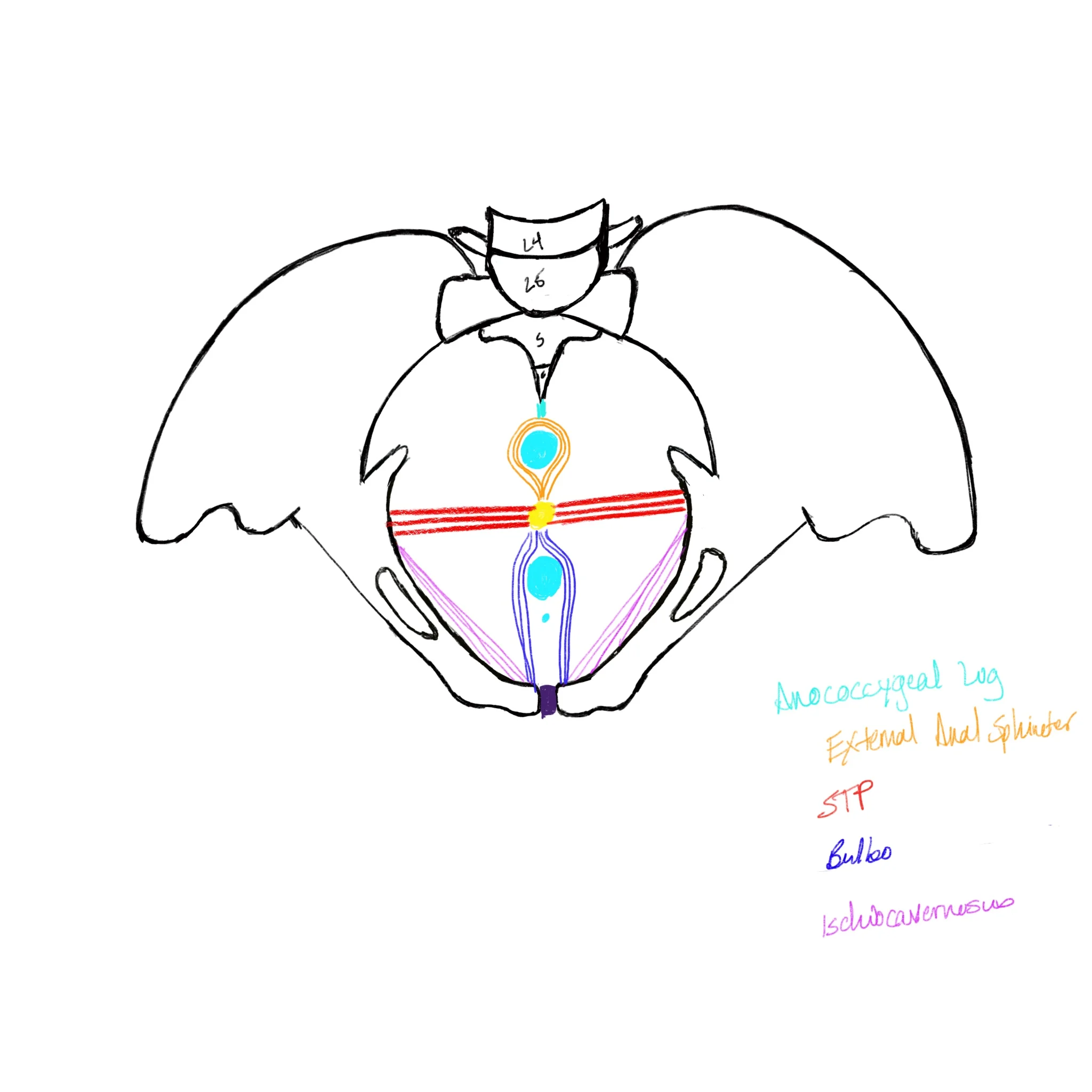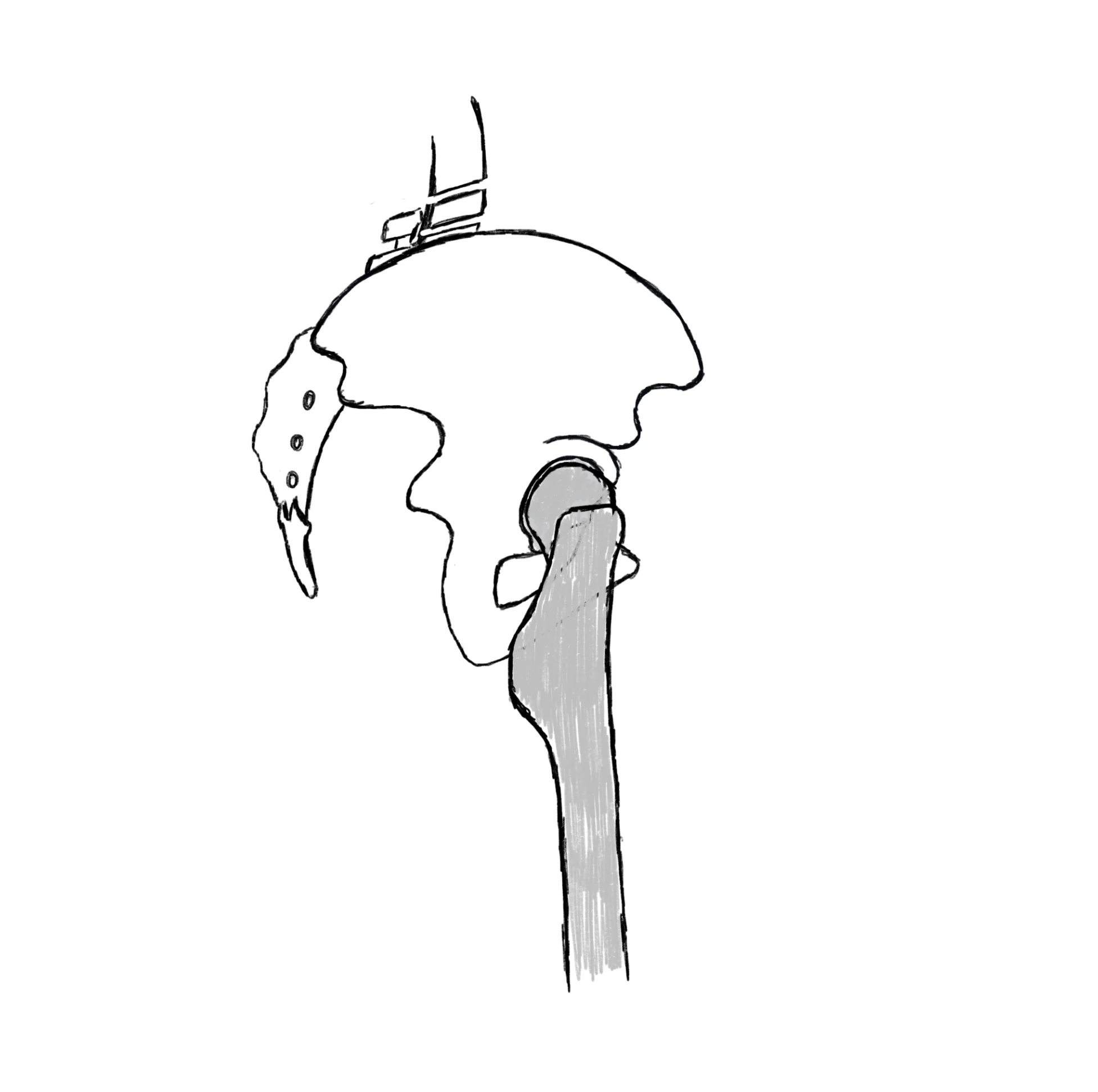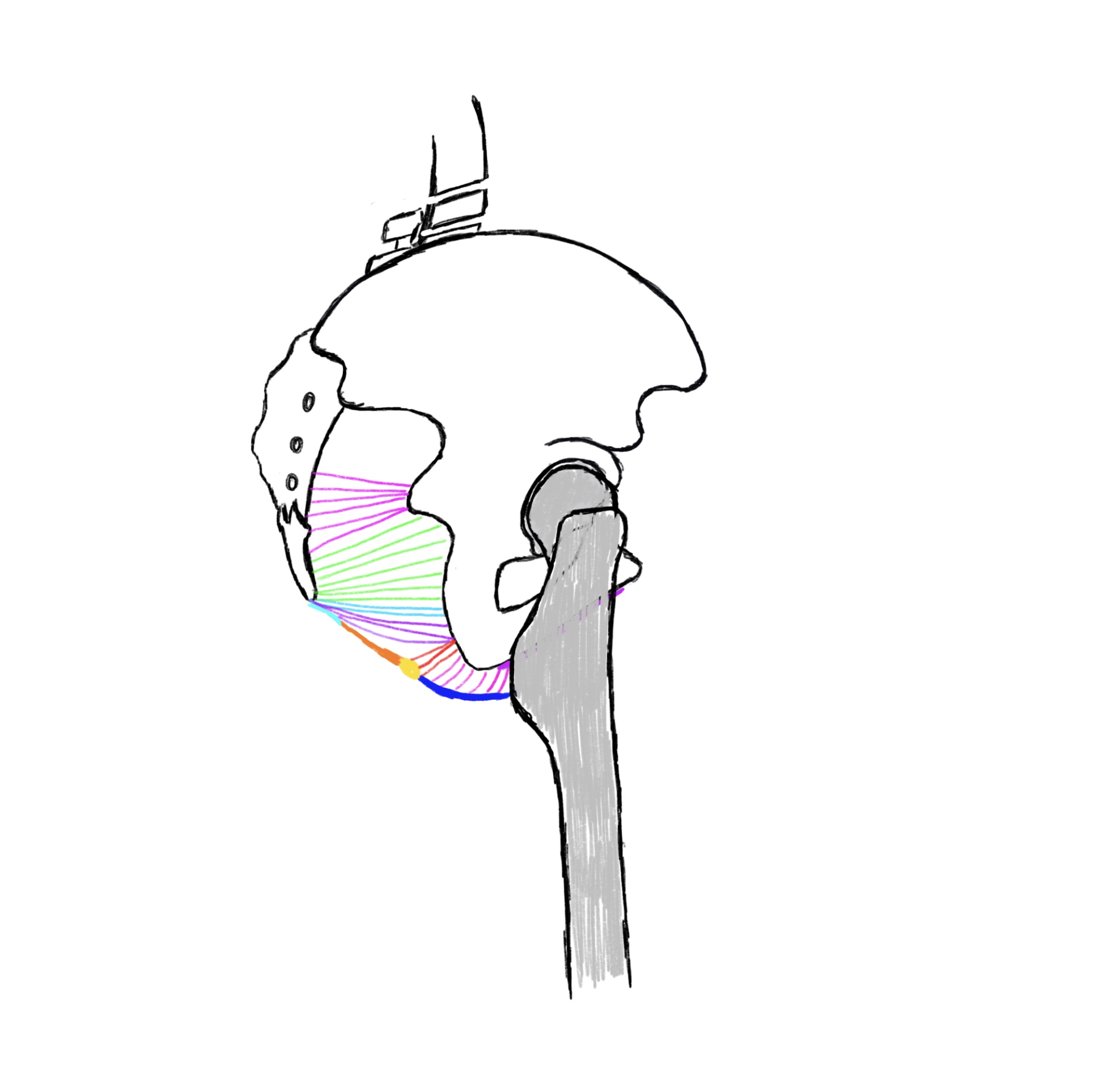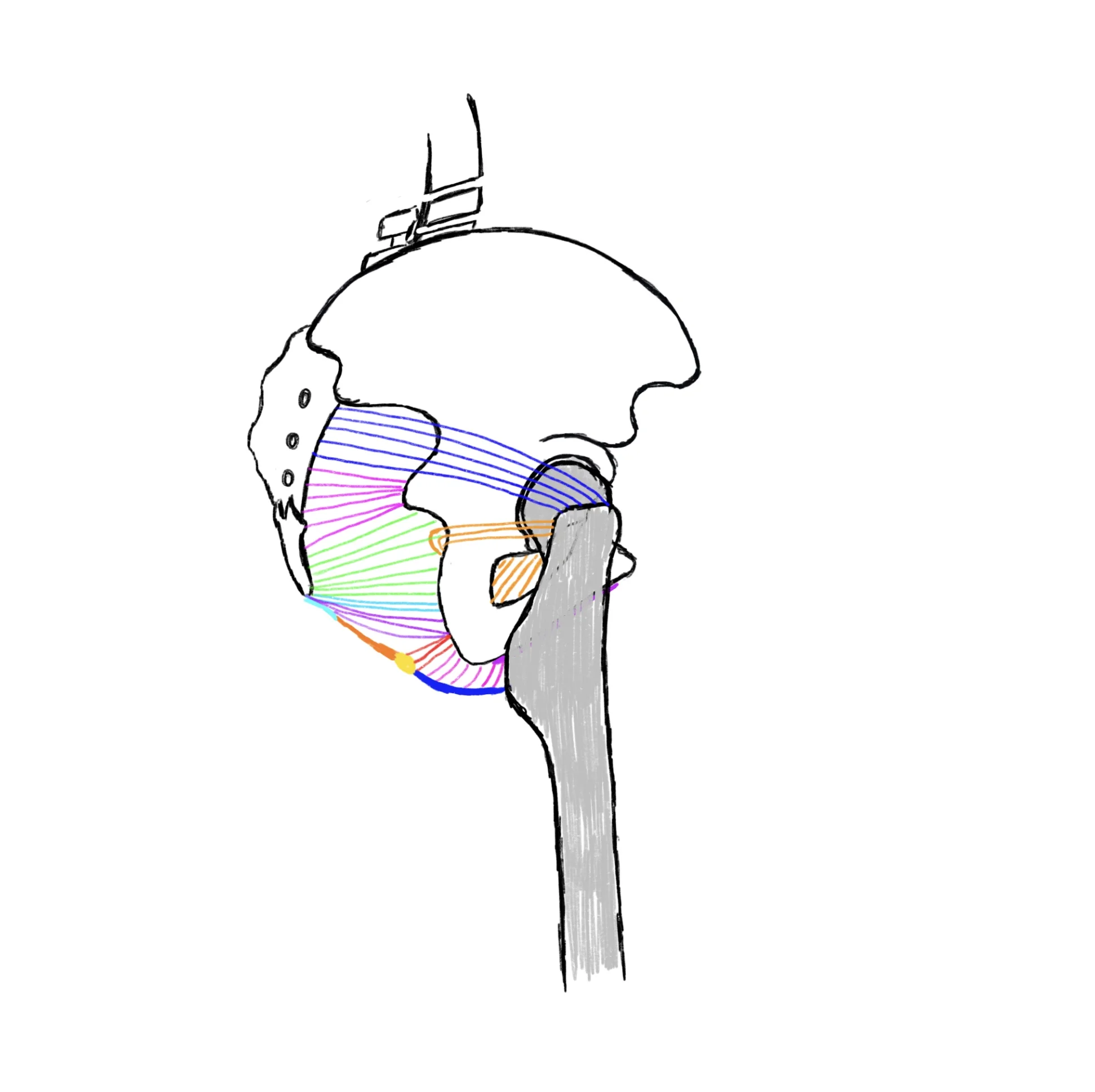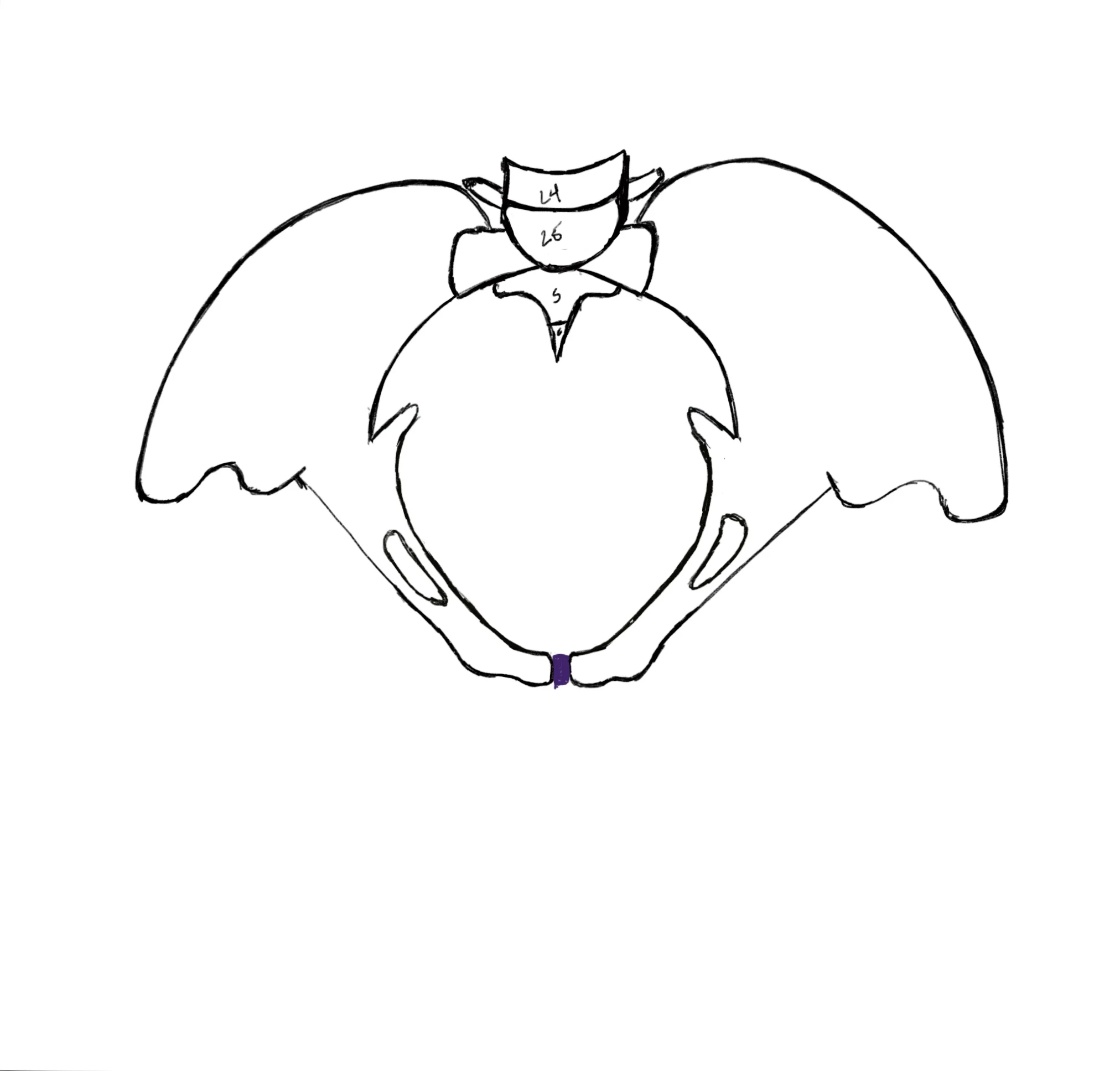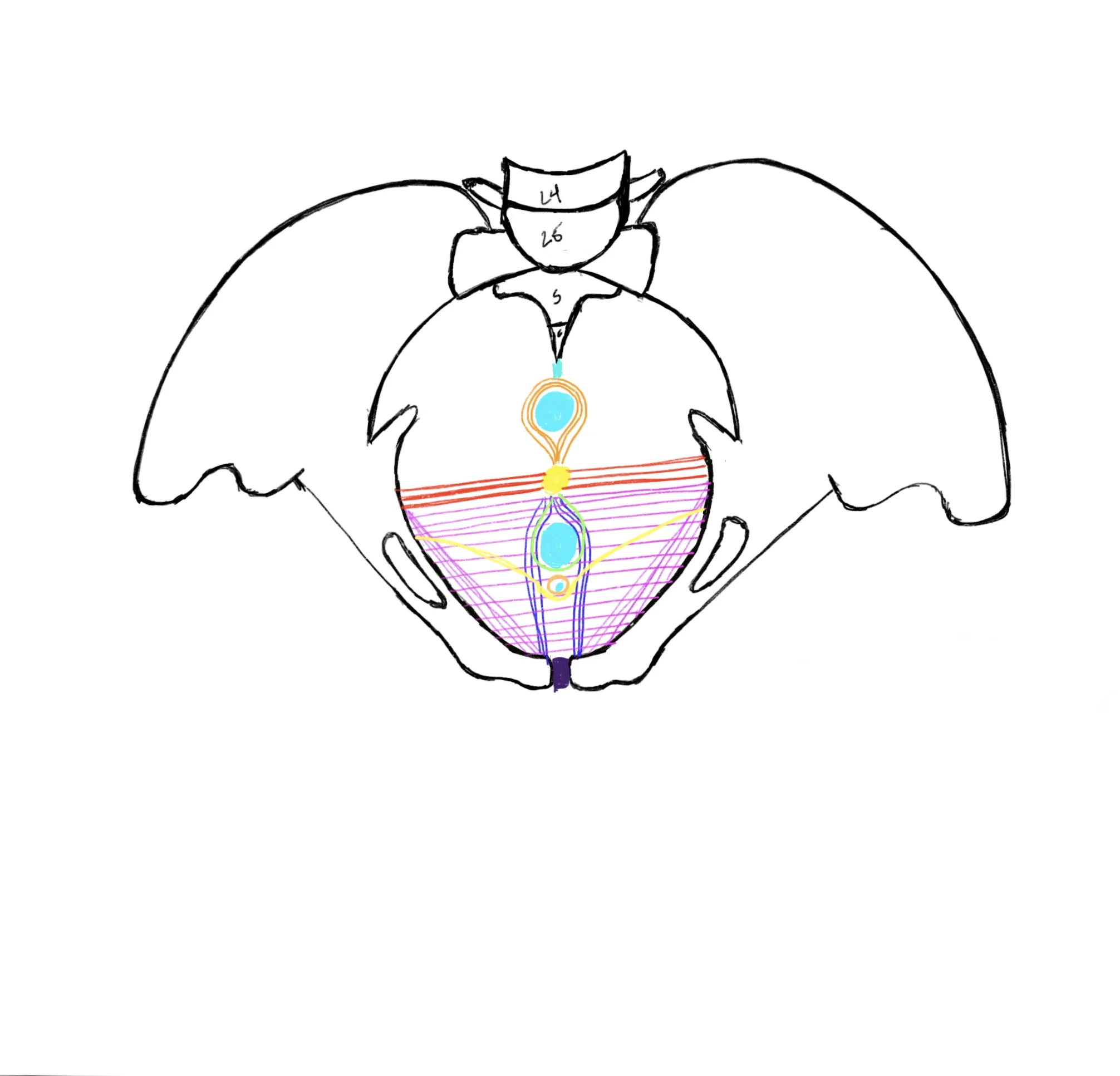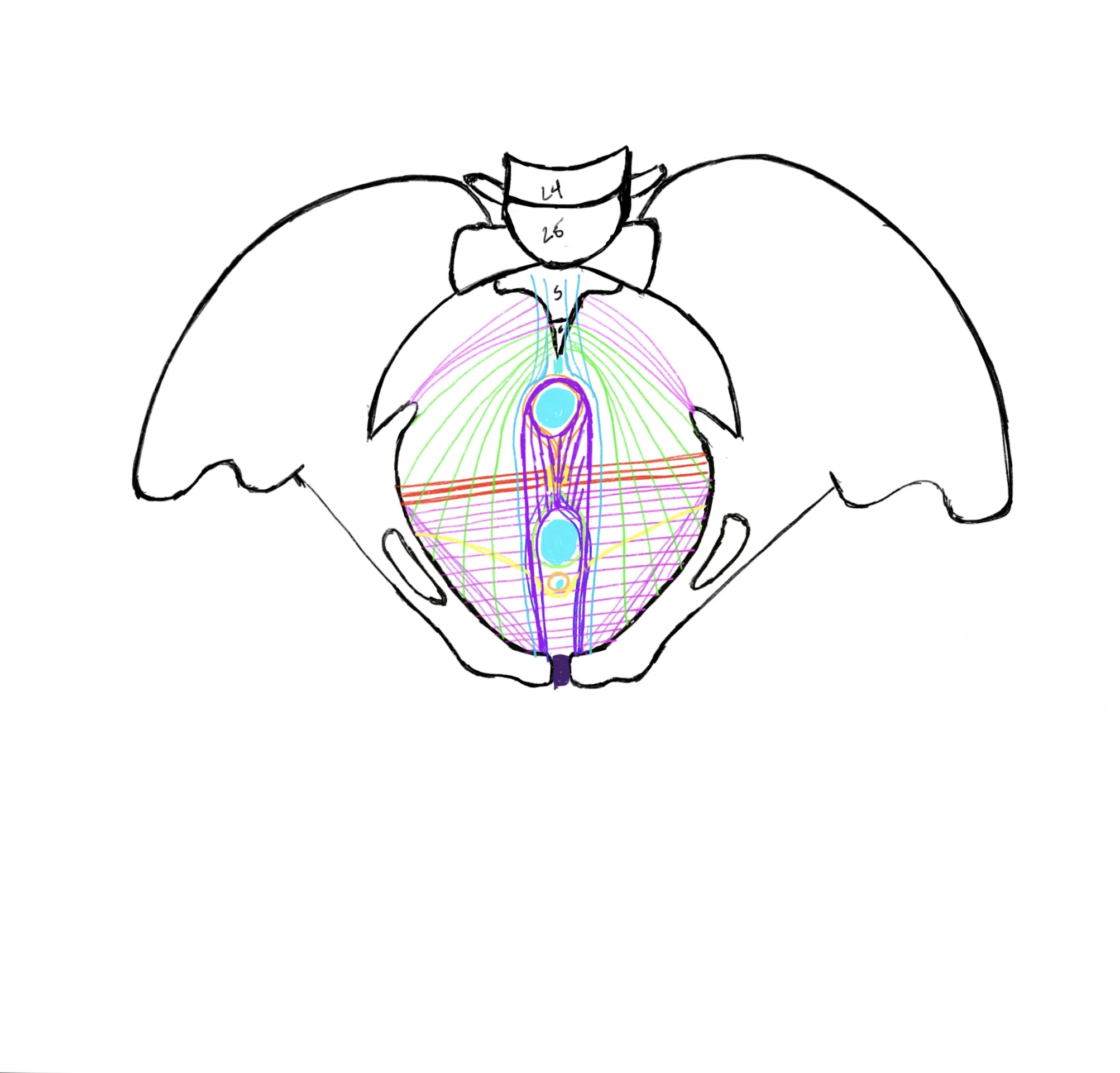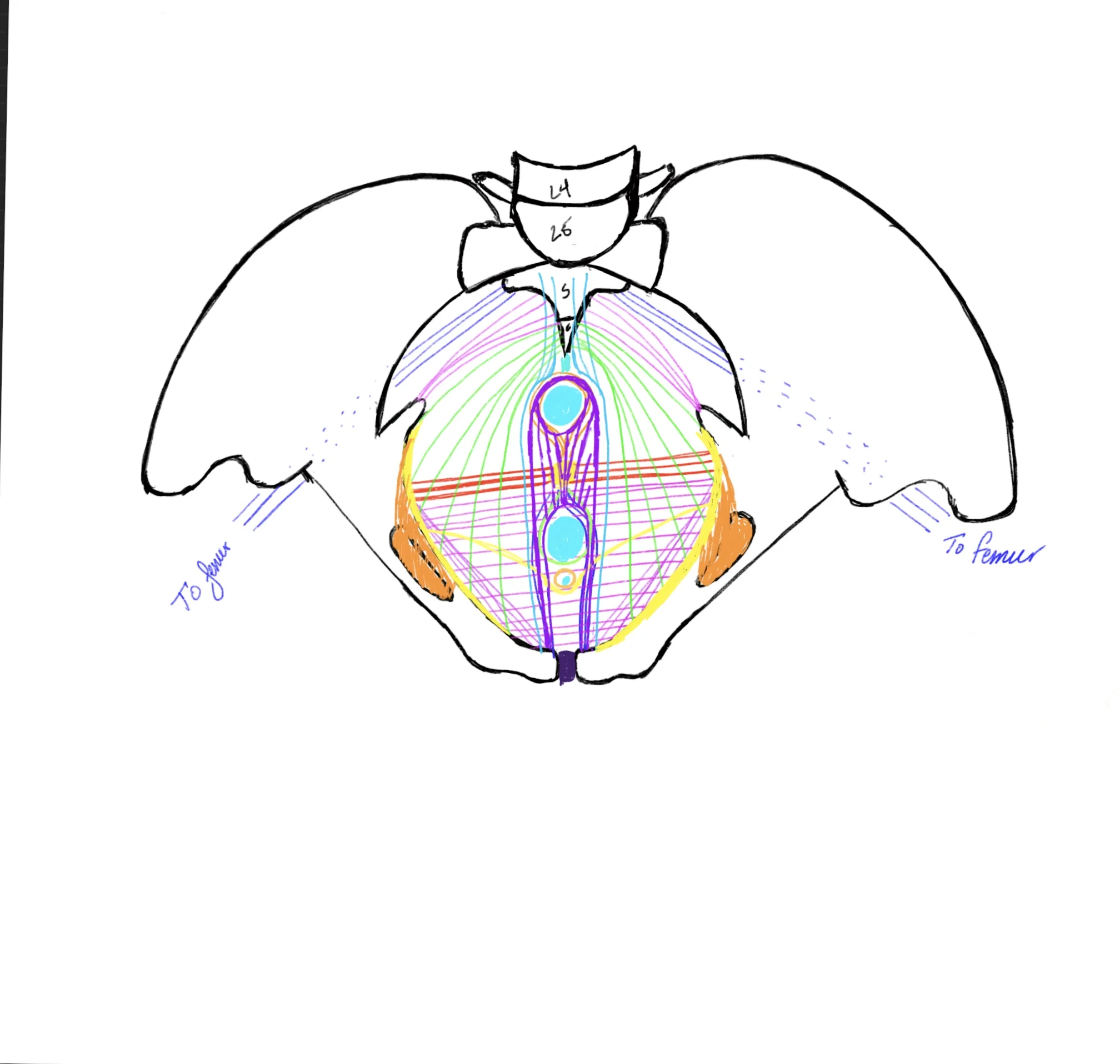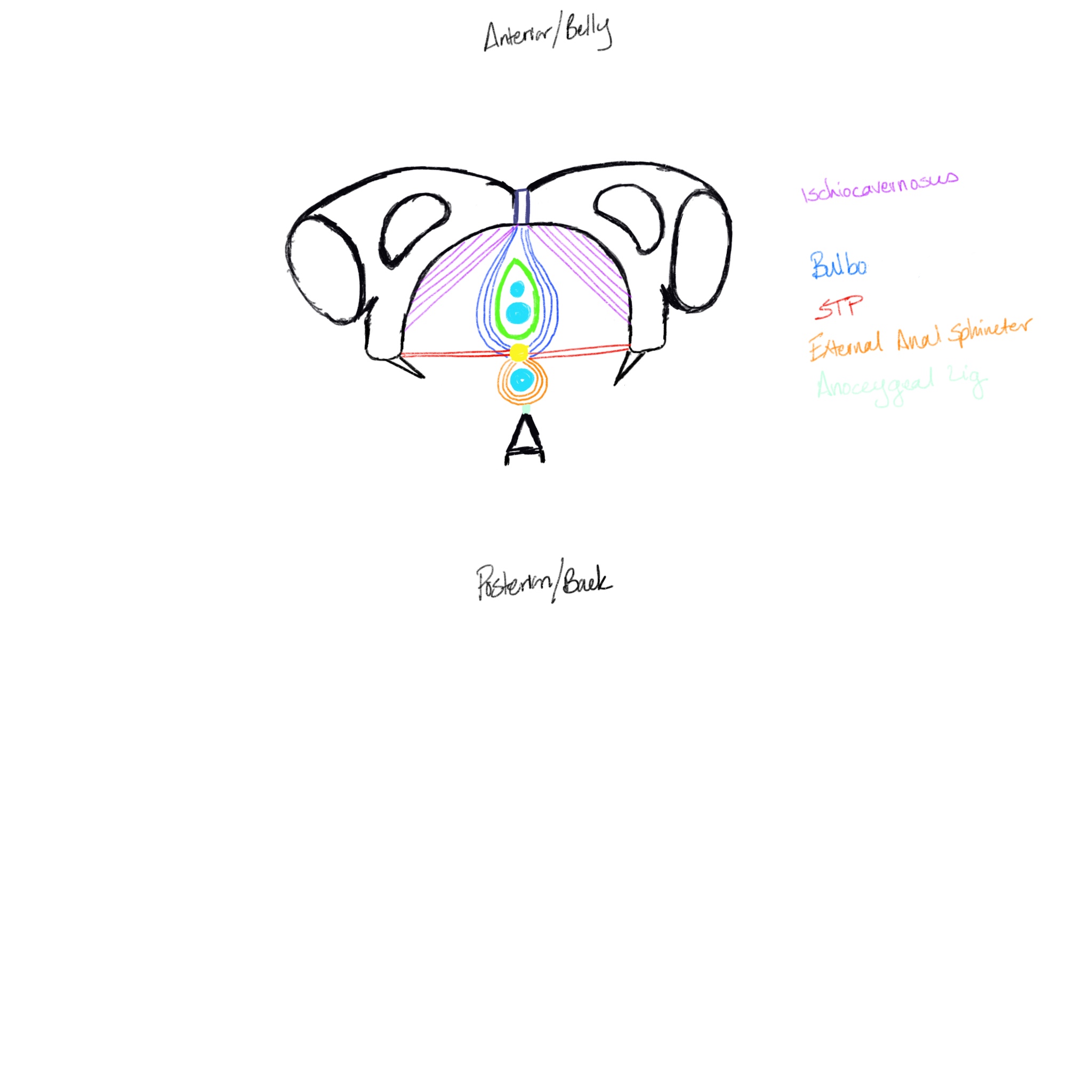Pelvic Floor: Layer 1
Welcome to layer one!
This is the most superficial layer, meaning it is the layer closest to the outside of your body. As such, these muscles often are more functional in the sphincteric and sexual realms.
The little yellow dot below represents the perineum, or perineal body. I like to think of as Grand Central Station - lots of things park here from many different places (bulbo, STP and EAS…as well as DPT which we’ll talk about next post). Because of this, the perineal body has fibers arranged in many different areas which makes it super strong and a perfect place for the pressures pelvic and abdominal cavities to bounce on as we inhale and exhale. It is the keystone of the dome of the pelvic floor.
All of these muscles are innervated by pudendal nerve that exits the spine from S2 - S4.
This is a schematic of the female pelvic floor.
View from Above (looking down, from the diaphragm into the pelvic outlet)
The blue circles represent (from top to bottom), the anus, the vaginal opening and the urethra.
Ischiocavernosus (aka ischio)
Originates at the ischial tuberosity (the sits bone) and the ischiopubic ramus
Inserts at the legs of the clitoris in females, and the legs of the penis in men
It moves blood up to the clitoris/penis during arousal
Bulbocavernosus/Bulbospongiosus (interchangeable, for all genders, aka bulbo)
Women:
Originates at the perineum
Inserts at the body of the clitoris & the bulb of the vestibule
It moves blood up to the clitoris, closes the vaginal opening, contributes to orgasm contractions
Men:
Originates at the perineum and the midline raphe
Inserts at the the body of the penis (corpus cavernosum)
It moves blood up to the penis, contributes to orgasms contractions and ejaculation
Superficial Transverse Perineum (aka STP)
Originates at the ischial tuberosity (the sits bone)
Inserts at the perineum
It stabilizes the perineal body
External Anal Sphincter (aka EAS)
Originates perineum
Inserts at coccyx via the anococcygeal ligament
Closes the anal canal to maintain continence
The EAS has three layers…more on this later.
In addition to the pudendal nerve (S2 and S3), the EAS also has direct nerve supply from S4
Female Pelvic Floor Diagram - Superficial Layer
Male Pelvic Floor Diagram - Superficial Layer
Pelvic Floor Layers, Side View
Pelvic Floor Layers, View from Above
(looking down, from the diaphragm into the pelvic outlet)
Pelvic Floor Layers, View from Below
(looking up at the pelvic floor, from between the legs)

